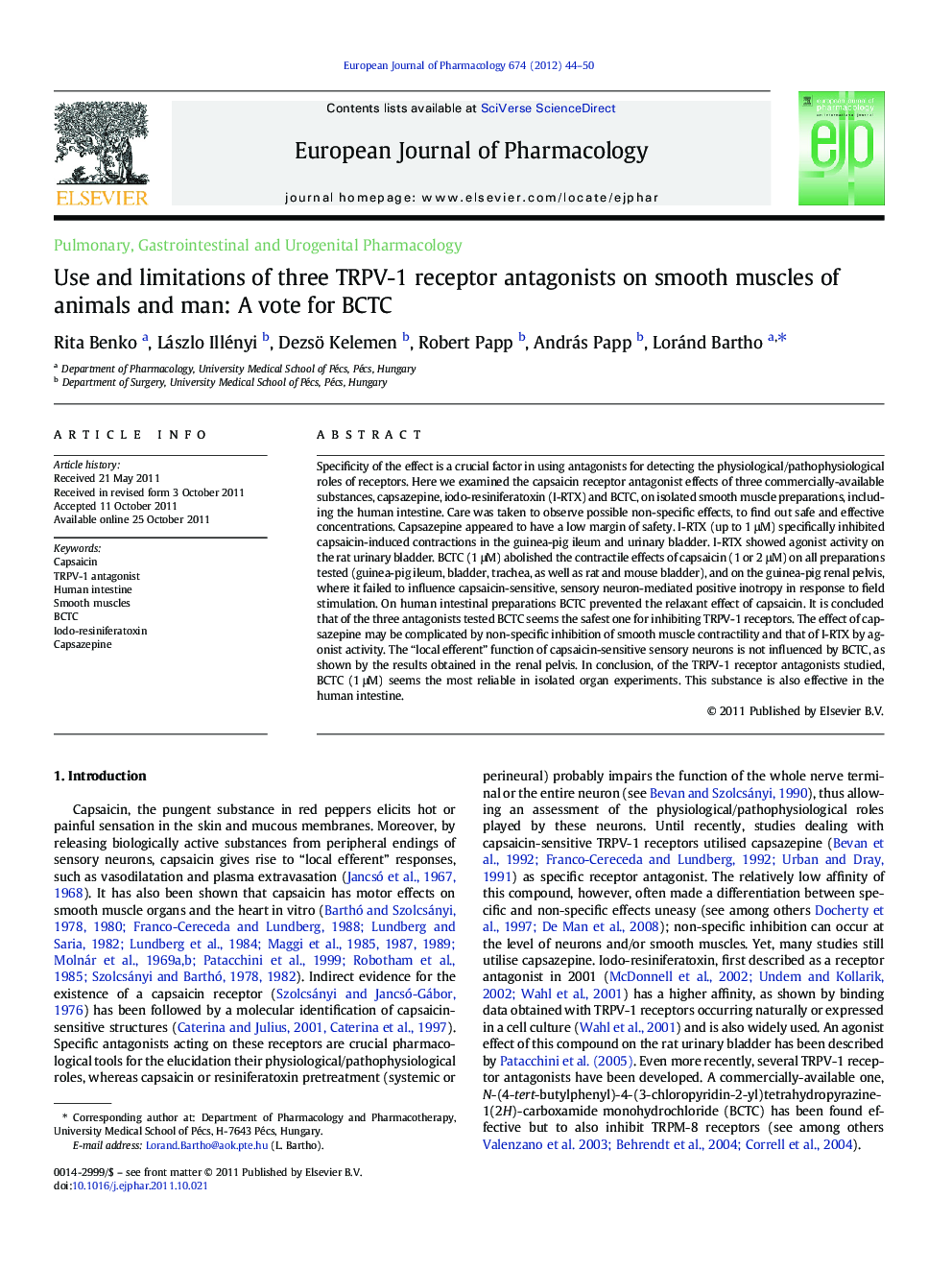| Article ID | Journal | Published Year | Pages | File Type |
|---|---|---|---|---|
| 5829943 | European Journal of Pharmacology | 2012 | 7 Pages |
Specificity of the effect is a crucial factor in using antagonists for detecting the physiological/pathophysiological roles of receptors. Here we examined the capsaicin receptor antagonist effects of three commercially-available substances, capsazepine, iodo-resiniferatoxin (I-RTX) and BCTC, on isolated smooth muscle preparations, including the human intestine. Care was taken to observe possible non-specific effects, to find out safe and effective concentrations. Capsazepine appeared to have a low margin of safety. I-RTX (up to 1 μM) specifically inhibited capsaicin-induced contractions in the guinea-pig ileum and urinary bladder. I-RTX showed agonist activity on the rat urinary bladder. BCTC (1 μM) abolished the contractile effects of capsaicin (1 or 2 μM) on all preparations tested (guinea-pig ileum, bladder, trachea, as well as rat and mouse bladder), and on the guinea-pig renal pelvis, where it failed to influence capsaicin-sensitive, sensory neuron-mediated positive inotropy in response to field stimulation. On human intestinal preparations BCTC prevented the relaxant effect of capsaicin. It is concluded that of the three antagonists tested BCTC seems the safest one for inhibiting TRPV-1 receptors. The effect of capsazepine may be complicated by non-specific inhibition of smooth muscle contractility and that of I-RTX by agonist activity. The “local efferent” function of capsaicin-sensitive sensory neurons is not influenced by BCTC, as shown by the results obtained in the renal pelvis. In conclusion, of the TRPV-1 receptor antagonists studied, BCTC (1 μM) seems the most reliable in isolated organ experiments. This substance is also effective in the human intestine.
